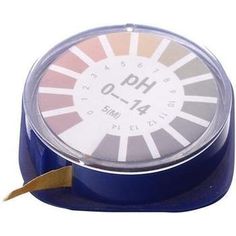PH Theory
Introduction to pH
pH is a fundamental concept in chemistry that measures the acidity or basicity of a solution. It stands for “power of hydrogen” and quantifies the concentration of hydrogen ions ([H+]) in a solution. The pH scale ranges from 0 to 14, where pH 7 is considered neutral, pH less than 7 is acidic, and pH greater than 7 is basic or alkaline.

Understanding pH Scale
The pH scale is logarithmic, meaning each whole pH value below 7 is 10 times more acidic than the next higher value. For example, a pH of 4 is ten times more acidic than a pH of 5 and 100 times (10 × 10) more acidic than a pH of 6.
Conversely, each whole pH value above 7 is 10 times more alkaline than the next lower value. For instance, a pH of 10 is ten times more alkaline than a pH of 9.
Mathematical Definition of pH
The pH of a solution is defined mathematically as the negative logarithm (base 10) of the hydrogen ion concentration in moles per liter:
pH=−log[H+]\text{pH} = -\log[\text{H}^+]pH=−log[H+]
Where:

- [H+] is the concentration of hydrogen ions in moles per liter.
Applications of pH in Daily Life
- Environmental Monitoring: pH measurement is crucial in assessing water quality in lakes, rivers, and oceans. Aquatic organisms have specific pH ranges they can tolerate, making pH a critical indicator of ecosystem health.
- Health and Medicine: pH balance is vital in bodily fluids like blood and urine. Deviations from normal pH ranges can indicate health issues such as acidosis or alkalosis.
- Food and Beverages: pH affects the taste, safety, and shelf life of food products. For example, pH control is essential in fermentation processes like brewing and pickling.
- Industrial Processes: pH regulation is key in various industrial processes, including chemical manufacturing, metal plating, and wastewater treatment.
Factors Affecting pH
Several factors can influence the pH of a solution:
- Acid-Base Dissociation: Acids donate protons (H+) to water, increasing [H+] and lowering pH. Bases accept protons or donate hydroxide ions (OH-), decreasing [H+] and increasing pH.
- Temperature: pH can change with temperature due to variations in ionization constants of acids and bases.
- Dissolved Gases: CO2 dissolves in water, forming carbonic acid and lowering pH.
- Ionization Constants: The strength of acids and bases, quantified by their dissociation constants (Ka and Kb), determines their ability to alter pH.
Buffer Solutions
Buffer solutions resist changes in pH when small amounts of acid or base are added. They consist of a weak acid and its conjugate base (or vice versa). The buffer capacity depends on the concentrations of the buffering components and their dissociation constants.
pH Measurement Techniques
- pH Meters: Electronic devices that measure the voltage between a reference electrode and a pH-sensitive glass electrode immersed in the solution.
- pH Indicators: Chemical dyes that change color in response to pH changes. They are often used in titrations and qualitative pH testing.
- pH Strips: Paper strips impregnated with pH indicators. The color change corresponds to the pH of the solution.

Common pH Ranges
- Strong Acids: pH close to 0 (e.g., hydrochloric acid).
- Weak Acids: pH slightly below 7 (e.g., acetic acid).
- Neutral Substances: pH 7 (e.g., pure water).
- Weak Bases: pH slightly above 7 (e.g., ammonia).
- Strong Bases: pH close to 14 (e.g., sodium hydroxide).
pH in Biological Systems
- Blood pH: Maintained between 7.35 and 7.45. Acidosis (pH < 7.35) and alkalosis (pH > 7.45) can disrupt cellular function.
- Soil pH: Influences nutrient availability to plants. Most plants prefer slightly acidic to neutral soils (pH 5.5-7).
- Ocean pH: Decreasing due to increased CO2 levels (ocean acidification), impacting marine organisms with calcium carbonate shells.
Conclusion
pH is a crucial concept in chemistry with widespread applications in various fields. Understanding pH helps in maintaining environmental balance, ensuring human health, optimizing industrial processes, and enhancing food quality.
